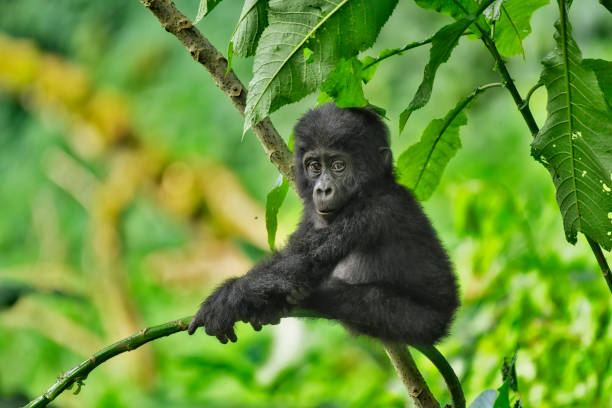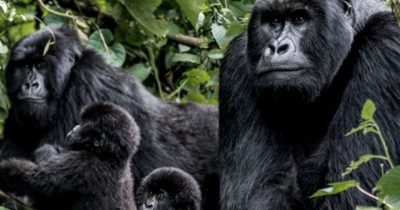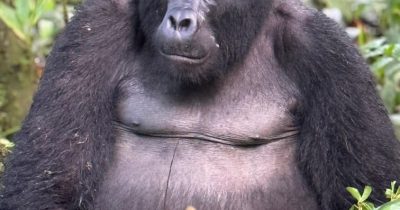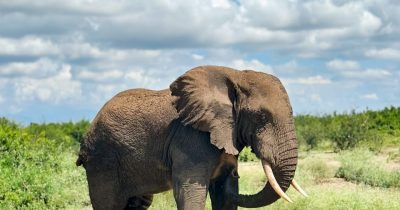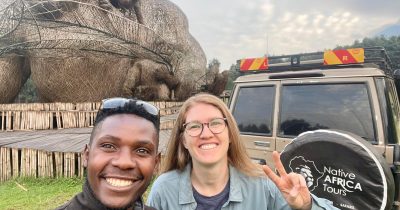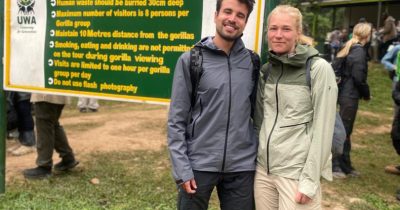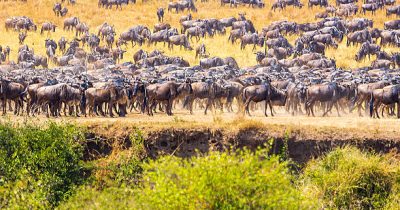Mountain Gorillas in Uganda and Lowland Gorillas in Congo Combined
Do you want to see mountain gorillas in Uganda and lowland gorillas in Congo? Uganda is an absolute marvel of adventurous wonder crafted and engineered by God’s hand. This marvel of greatness symbolizes Africa in these premises and stands up to its name, the Pearl of Africa. If this came from anyone else other than the former British Prime Minister Winston Churchill, many would deem it false. Well, you don’t have to take Churchill’s word for it, come and witness it yourself firsthand as you explore Uganda and know why it is indeed Africa’s finest pearl
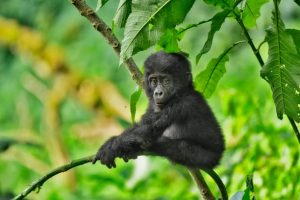
In the land where montane forests in the highland mountains are manned by giant mountain gorillas with the help from their smaller cousins, the chimpanzees take over the lowland equatorial forest in the council of other primates like colobus monkeys, olive baboons, and vervet monkeys. The savannah plains are reigned by the roaring echoes of lions and stamping feet of prey as they scatter in fear upon hearing the kings’ roar. The skyline horizon is decorated by beautifully colored bird species that announce their presence with sweet melodies that calm the soul.
As the rumbling waters breathe life into this beautiful landscape, rocks oppose their force, hence forging a deadly combination to form the strongest waterfall on earth. What doesn’t Uganda have? Imagine a land that poses features that oppose gravity and put scientists to the test as they witness the longest river on earth, the Nile, flow northwards.
Mountain gorillas
Uganda is among the very few, only three, in this case, remaining gorilla destinations in the world. The two destinations are Rwanda’s Volcanoes National Park and Virunga National Park of the Democratic Republic of Congo. These destinations are part of the Virunga conservation area. This conservation area is the last remaining habitat of mountain gorillas and hence dimes them endangered primate species. Mountain gorillas are intellectually gifted beings as they share a DNA close to that of humans by 98%. This explains their behavior in living like humans by being social and leadership of their groups. Mountain gorillas live in groups known as families, and each family is headed by a male gorilla called a silverback.
Just like it is in humans, silverbacks have the sole duty of protecting and defending the family from intruders. They are also tasked with the responsibility of locating food so that the family can move. In summary, silverbacks are protectors and providers in the entire family. Females, on the other hand, have the responsibility of grooming the young ones and reproduction. There are over 50 gorilla gorillas in Bwindi Impenetrable National Park. However, only 26 families are habituated to trekking daily. Mgahinga Gorilla National Park, though, has just one habituated gorilla family.
Physical Characteristics of Mountain gorillas
Mountain gorillas are one of the largest species of their kind, with the silverback weighing 200-250 kilograms at a height of 1.8 meters. Females weigh 100-150 kilograms and have a height of 1.5 meters, which is slightly less compared to the males. Silverbacks get their name from the silver-like fur on their low backs. This fur changes to silver when the gorilla starts to mature. Before being silverbacks, they are known as blackbacks since the fur is always dark. Mountain gorillas in Uganda are found in the southern region of Bwindi Impenetrable National Park and Mgahinga Gorilla National Park. Bwindi hosts more than 559 individuals, and Mgahinga harbors about 100 mountain gorillas. These mountain gorillas can be trekked any time of the year at a fee of USD 800 for foreign non-residents, USD 700 for foreign residents, and UGX 300,000 for East Africans.
Lowland gorillas in Congo
The Democratic Republic of Congo is a perfect gorilla habitat for the lowland gorillas. True to their name, the lowland gorillas harbor the lowland areas of the rainforests, unlike their cousins, the mountain gorillas who dwell in the highlands. The Democratic Republic of Congo hosts the Eastern lowland gorillas. These are named Eastern because of their location in the eastern part of the continent of Africa. Their direct cousins and the Western lowland gorillas found in Cameroon, Gabon, and Ivory Coast. The Democratic Republic of Congo’s topography aligns well with the Eastern lowland gorilla habitat. This is because the country is a cocktail of nature and landscapes from the highland Virunga Mountains to the lowland areas of the east.
Lowland gorillas are found in the Kahuzi-Biega National Park on the bases of the mountains in the Democratic Republic of Congo. This park was declared a World Heritage site by UNESCO in 1980. More so, it harbors a variety of flora and fauna, with the eastern lowland gorillas being the main highlights. They are a very rare species of the world but dominant in Kahuzi-Biega National Park and Lwiro province. The Democratic Republic of Congo has only one lowland gorilla species, which is the eastern lowland gorilla, which is the most visited and trekked species in Kahuzi-Biega National Park.
Differences between Mountain gorillas in Uganda and Lowland gorillas in Congo
Lowland gorillas of the Democratic Republic of Congo are smaller compared to their cousins, the mountain gorillas. They have slender bodies with less gray-like fur and a short face since they dwell in lowland areas that are not as cold as the highlands. Lowland gorillas have a distinctive reddish-brown tinge on their heads. Lowland gorillas are also excellent swimmers as they have adapted to their environment, which has wetlands and streams. Trekking the lowland gorillas in Kahuzi-Biega National Park is quite easy since they are found in lowland areas. A trekking permit for the lowland gorillas in the Democratic Republic of Congo can go for USD 400 for foreign non-residents and USD 200 for East Africans. Kahuzi-Biega National Park has about 9 lowland gorilla families with 4 already habituated and ready for trekking.
